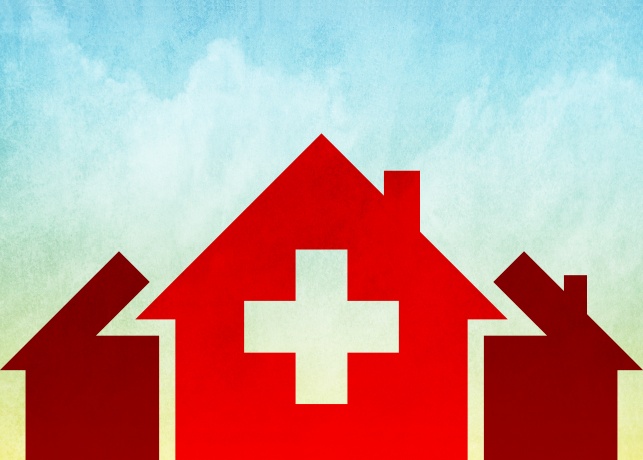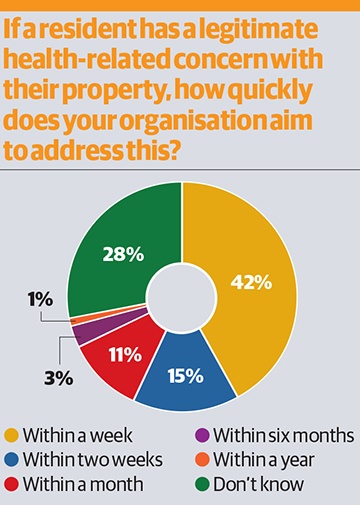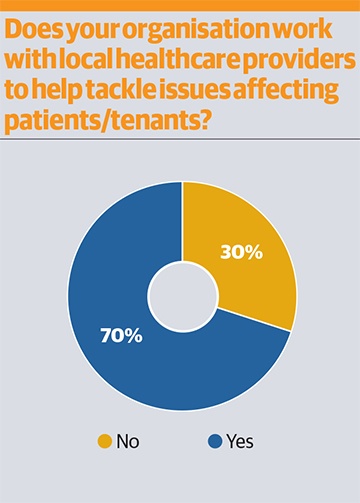Sound in mind and body
Are social landlords aiming to improve the health of their tenants? Inside Housing and Mitie carried out a survey to find out

In association with:

How can social landlords better improve the link between the health service and housing? What strategies are the sector implementing? Are social landlords responding quickly when tenants say their homes are making them sick?
These are just some of the questions posed to housing professionals in housing associations, local authorities and arm’s-length management organisations in a recent survey by Inside Housing and property and facilities management company Mitie.
We wanted to find out what the sector really thinks about the relationship between health and housing, as well as detail on some of the vital work and initiatives social landlords are undertaking in this increasingly important field.
Health at home
Poor quality housing can have an adverse effect on tenants’ health. At first glance, the survey backs up this point as it shows that a large proportion of the sector does consider resident health and well-being to be a very important element of housing management.
Out of 174 housing professionals to respond to our survey, 58% told us the health of tenants is an “integral part” of the property management process. A further 33% identified with the view that there are a “number of ties between health and property services”, and just 2% of participants said that property management and residential health and well-being were completely unrelated.

Anna Benbow, head of asset management at Mitie, says that it’s encouraging that such a large proportion of respondents do understand the role they have in keeping tenants healthy.
“It follows the way I think the sector is going, that as a social landlord, you have some responsibility helping them live in that home,” she says. “If they’re living there and [the property’s] causing them issues, that is a problem that we as a sector need to respond to.”
When asked how quickly their organisation aims to address a legitimate health-related concern from a resident, 42% of respondents told us they would take action within a week of the request. Another 15% would take action within two weeks, and 11% reported that it would be tackled within a month. However, more than one in four (28%) didn’t know how long the response time would be.
Are landlords going further than simply fixing problems that could be making tenants ill, however?
The most popular action social landlords are taking is to improve the accessibility of their homes - with 62% currently addressing, or looking to address, this issue. Other popular measures being looked at or implemented by housing organisations were improving thermal efficiency (57%), community health and well-being programmes (57%) and security (47%).
“We as a sector are dealing with significantly ageing accommodation,” Ms Benbow observes. “It is very difficult refurbishing existing homes to accessible standards, so you do wonder how we can help the people living there without turning their home upside-down.”
On the evidence of the survey results, respondents are generally confident that their organisation is delivering physical health improvements through their housing offering. A quarter of those quizzed rated their organisation as “very good”, with almost half (47%) rating themselves as “good”. Only 7% described their organisation’s approach as “poor” or “very poor”.
That groundswell of confidence fades a little when the subject switches to tenant mental health and well-being, though. Again, 25% rated their organisation’s approach as “very good”, but the percentage described as “good” fell to 39%. “Poor” and “very poor” responses also rose to 9%.

The SHE Project, a supported housing scheme aimed at women in East Lancashire, is taking a holistic approach to supporting the well-being of its tenants. For instance, every tenant is registered with a GP and dentist, plus the organisation provides debt support and legal advice for residents.
Tracey McMahon, head of services and partnerships at the SHE Project, rated the rganisation “very good” in delivering both physical and mental health improvements for tenants. “It’s about being people-led, as opposed to housing-led,” she says. “We work through everything [with our residents], rather than saying here’s a blanket set of techniques which are going to help you.”
Complementary work
Seven out of 10 social landlords are currently working with local health services, and this is an area which Paula Windebank, community development officer at 21,000-home Radian, is keen to explore further, as she believes health and housing share a lot of common ground. But there are challenges, she says. “One of the difficulties is finding out who I need to speak to and how we can work together to make a difference co-operatively through project ideas, or work out how we can complement each other’s work.”
When asked what their recommendations were for improving the link between health and housing, there were a number of varied responses. Many agreed with Ms Windebank that better sign-posting from health bodies was needed, in order to better share objectives and priorities.
One such response came from Jane Tennent-Taylor, service development manager at 35,000-home A2Dominion, who says: “Health needs to grab the opportunities housing can offer to support health and well-being; understand the ‘housing first’ preventative model and also increase investment in social prescribing initiatives.”
Financial challenges are looming for social landlords, with rent cuts and welfare reform starting to bite. Ms Windebank from Radian suggests that the sector is in “difficult times” and warns that many community outreach schemes could be on the chopping block, as organisations look to cut operating costs.
Despite this uncertainty, on the basis of these survey results, it is clear that many housing providers are still managing to do a lot of good work towards the health of their tenants and working with the NHS. However, arguably, more still needs to be done.







